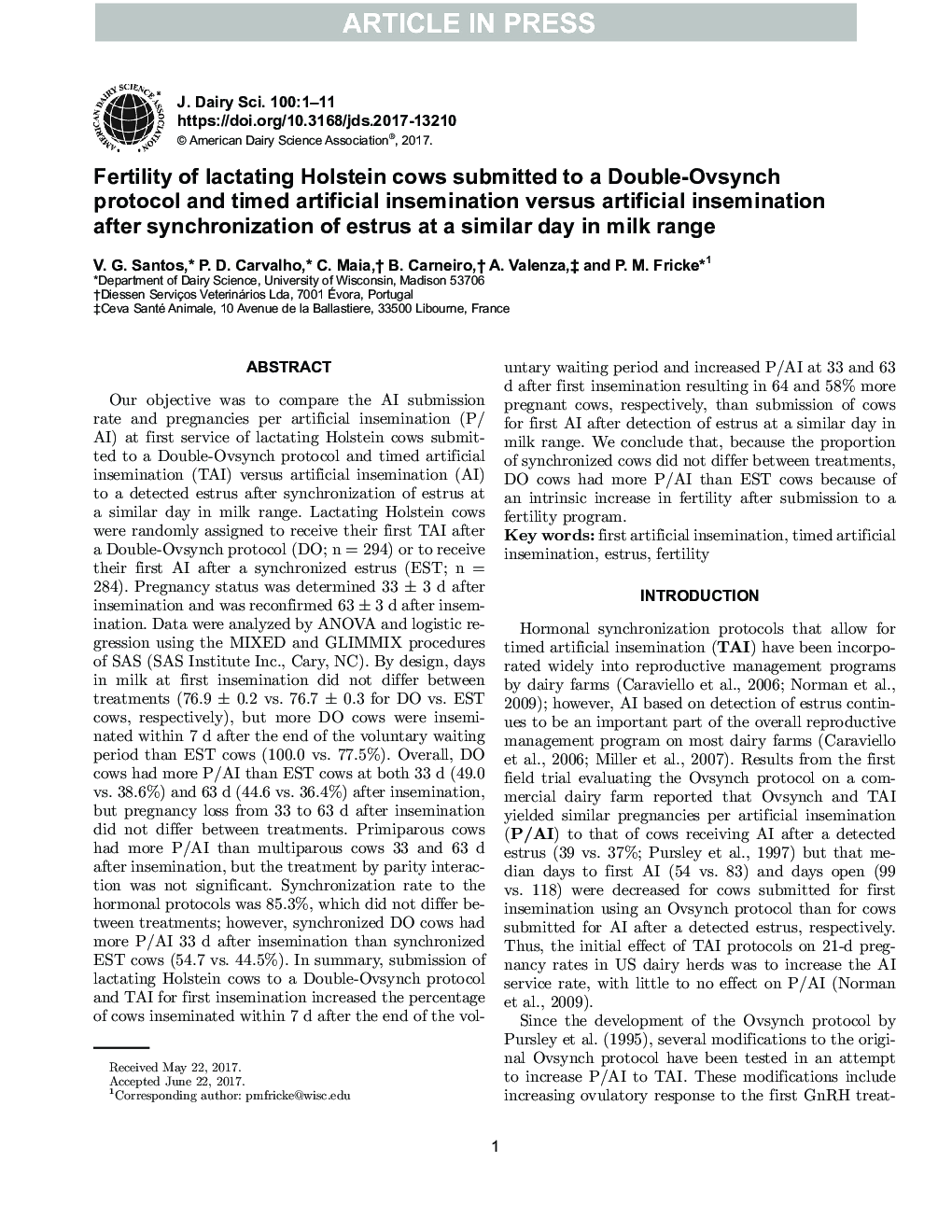| Article ID | Journal | Published Year | Pages | File Type |
|---|---|---|---|---|
| 5542037 | Journal of Dairy Science | 2017 | 11 Pages |
Abstract
Our objective was to compare the AI submission rate and pregnancies per artificial insemination (P/AI) at first service of lactating Holstein cows submitted to a Double-Ovsynch protocol and timed artificial insemination (TAI) versus artificial insemination (AI) to a detected estrus after synchronization of estrus at a similar day in milk range. Lactating Holstein cows were randomly assigned to receive their first TAI after a Double-Ovsynch protocol (DO; n = 294) or to receive their first AI after a synchronized estrus (EST; n = 284). Pregnancy status was determined 33 ± 3 d after insemination and was reconfirmed 63 ± 3 d after insemination. Data were analyzed by ANOVA and logistic regression using the MIXED and GLIMMIX procedures of SAS (SAS Institute Inc., Cary, NC). By design, days in milk at first insemination did not differ between treatments (76.9 ± 0.2 vs. 76.7 ± 0.3 for DO vs. EST cows, respectively), but more DO cows were inseminated within 7 d after the end of the voluntary waiting period than EST cows (100.0 vs. 77.5%). Overall, DO cows had more P/AI than EST cows at both 33 d (49.0 vs. 38.6%) and 63 d (44.6 vs. 36.4%) after insemination, but pregnancy loss from 33 to 63 d after insemination did not differ between treatments. Primiparous cows had more P/AI than multiparous cows 33 and 63 d after insemination, but the treatment by parity interaction was not significant. Synchronization rate to the hormonal protocols was 85.3%, which did not differ between treatments; however, synchronized DO cows had more P/AI 33 d after insemination than synchronized EST cows (54.7 vs. 44.5%). In summary, submission of lactating Holstein cows to a Double-Ovsynch protocol and TAI for first insemination increased the percentage of cows inseminated within 7 d after the end of the voluntary waiting period and increased P/AI at 33 and 63 d after first insemination resulting in 64 and 58% more pregnant cows, respectively, than submission of cows for first AI after detection of estrus at a similar day in milk range. We conclude that, because the proportion of synchronized cows did not differ between treatments, DO cows had more P/AI than EST cows because of an intrinsic increase in fertility after submission to a fertility program.
Related Topics
Life Sciences
Agricultural and Biological Sciences
Animal Science and Zoology
Authors
V.G. Santos, P.D. Carvalho, C. Maia, B. Carneiro, A. Valenza, P.M. Fricke,
